Historical information
Jewish history in Moldova dates back several centuries. The Jews living on the territory of Moldova and Bessarabia had left a very significant mark in the history of the country. They were always considered a great people having rich knowledge in almost all spheres, showing the good deeds and playing an important role in the economy of the area. They contributed much to the history and way of life of the Moldovan people and were always causing envy in people by their success and prosperity. According to the Census, at the beginning of the 19th century, the Jews were living in 24 Moldavian cities, as well as in many towns and villages having 16 Jewish schools and 70 synagogues. The region has become a center of literature written in Hebrew and Yiddish.
By the beginning of the 20th century economic differences between Jewish and other communities had been evident. Some Jewish young people joined the revolutionary movement, and an anti-Semitic newspaper called “Bassarabets” had appeared causing horrible pogroms and victims among the Jews.
During the World War II the Jews in Bessarabia had faced and suffered even more violent events as “Bessarabia’s Clean-Up” resulted in a massacre of the Jews in the villages and to the concentration of the city’s Jews into a ghetto. In July, August 1941 about 150000 of the Jews were exterminated by the so-called “special train” created by the German Army and Romanian Dictator aiming to murder all the Jews. Moldavian Jews played a significant role in the anti-Nazi resistance movement.
After the war, Jewish cultural life of Moldova did not revive. Many Moldova Jews suffered from the Soviet Union anti-Semitic campaigns, culminated by the Doctors case; many Jewish physicians were arrested in Moldova. Since the late 1960s Moldovan Jews played an active role in the struggle for repatriation to Israel. According to the Census 1979, 80,000 Jews (two percent of the total population) were living in Moldova. In the period 1989 – 2002 there was a mass immigration of the Jews from Moldova to Israel, Germany, U.S. and other countries.
Nowadays, around 18 thousand of the Jews are living in Chisinau, 3 thousand in the northern Moldova, and more than 2
thousand in Tiraspol (Transnistria). Large Jewish communities are situated also in the cities Rybnitsa, Beltsi, Bendery,
Soroca, Orhei.
Highlights of the tour
- Getting acquainted with the rich Jewish heritage of the country (Present and Past)
- Visiting Jewish sites throughout Moldova (synagogues, cemeteries, monuments) (both functional and non-functional)
- Visits to the Jewish community centers, meeting with local representatives
- Get to know the history and cultural life of the Moldovan people
- Learn Moldavian wine and gastronomy
- Visit the biggest wine cellars in the world
Sample Itinerary
Day 1: Chisinau Arrival at Chisinau International Airport.
Transfer to hotel in Chisinau. Check-in. Time at
leisure. Welcome Dinner at national restaurant in Chisinau “La Taifas” (for groups)
Overnight in Chisinau. (D)
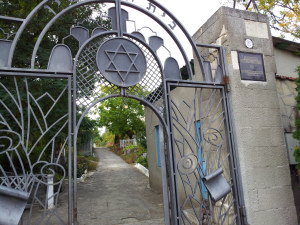 Day 2: Jewish Heritage Sightseeing Tour of Chisinau.
Day 2: Jewish Heritage Sightseeing Tour of Chisinau.
Chisinau- the capital of the Republic of Moldova was a flourishing Jewish center in the 18th century and had witnessed many events connected with the Jews since then. By the end of the 18th century the Jews were owners of most of the factories of those times with Jewish employees.
09:00 – 13:00 – Jewish tour of Chisinau
Sites to be visited in Chisinau:
The Jewish Cemetery (Buiucani district) – one of the oldest cemeteries in Chisinau with the burials of the 19th century. There can be found the unique memorial synagogue (half-ruined). Many other monuments and old graves lying on the territory of the cemetery are of great interest, as well.
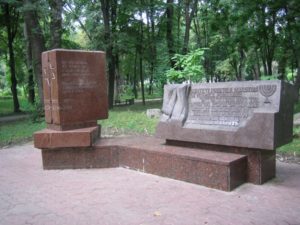 The Memorial to the Victims of the pogroms in Chisinau in 1903 and 1905 situated in the area of the Jewish cemetery.
The Memorial to the Victims of the pogroms in Chisinau in 1903 and 1905 situated in the area of the Jewish cemetery.
Synagogue of the “Glaziers” – the only functional synagogue in Chisinau built at the end of the 19th century.
This synagogue had worked until the World War II and was very much destroyed as a result of the bombings.
Later, it was repaired many times preserving its original style. Today, it’s not a Glaziers’ Synagogue, it’s just city synagogue on Habad Liubavici Street where religious Jews used to worship.
Museum of Jewish History and House of the Jews “KEDEM” – the building of the former Synagogue “Wooden” built in 1835.
The museum was established by the Jewish community and exposes a rich collection of Jewish documents, books, personal objects from many Jewish families.
Building of the Synagogue “Sennaia” (“hay synagogue”) (non-functional) – was built in Chisinau in 1886 on the funds of the Jewish community. It’s a stone building with a tile roof situated on the square where up to 1940 took place some fairs of cattle and hay. During the World War II there was the Gestapo Residence. Nowadays, the building of the synagogue is rented by the religious and educative organization in Moldova “Agudat Israel” and is situated on 5 Shuseva Street
The ruins of the Synagogue Rava Tsirelisona and Home for the Elderly (1910) on V. Alecsandri Street
“Choral Synagogue” – founded in 1812 in Chisinau the synagogue represented the biggest and the most beautiful temple of the period. The synagogue was the most important Jewish house of worship in Chisinau in the period 1913 – 1940. During the Soviet Times the building was turned to a theatre where a dramatic “Chehov” Theatre has been settled till nowadays.
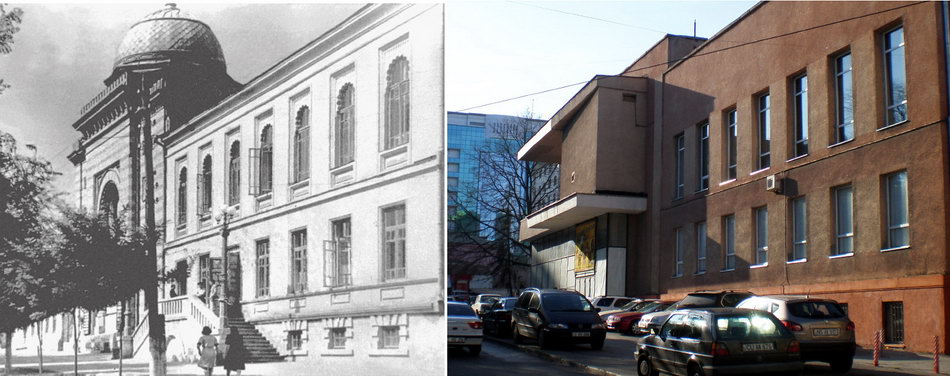
Monument to the Victims of the Chisinau Ghetto – erected in 1992 on Jerusalim Street in Chisinau. Chisinau Ghetto was, in fact, a place where the Jews were concentrated before their deportation. The Ghetto was in hand of Romanian and German commandant’s offices. To the deportation campus in Odessa only some hundreds of Jewish people have arrived, the rest were shot on their way to Transnistria.
 Monument to the Victims of Fascism.
Monument to the Victims of Fascism.
13:00 – 14:30 – Lunch at restaurant “Propaganda” placed in an old one-floor apartment building of one of the Jewish families-it’s a restaurant that offers some relaxing art atmosphere with cute decoration.
15:00 – 17:00 – Tour of Chisinau to be continued. Tour to Jewish sites to be followed by other Moldavian sites and peculiarities: Central Square Stefan the Great and Saint with Monument to Stefan the Great and Saint; the Bell Tower; Lord Nativity Central Cathedral; the Triumph Arch; the Parliament; the Presidency; the City Hall; the Memorial Eternity; the Souvenir’s shop and market; the Alley of Classics with sculptures of Romanian Classics; National Museum of History and Archeology.
Free time.
19:00 – 20:30 – Dinner at restaurant of traditional cuisine “Vatra Neamului” in Chisinau. (Kosher style food on request). Overnight in Chisinau.
(B, L, D)
Day 3: Discover Orhei Region Jewish Heritage and an open-air museum Orheiul Vechi.
Find yourself in an underground wine city of Cricova and taste their precious wines.
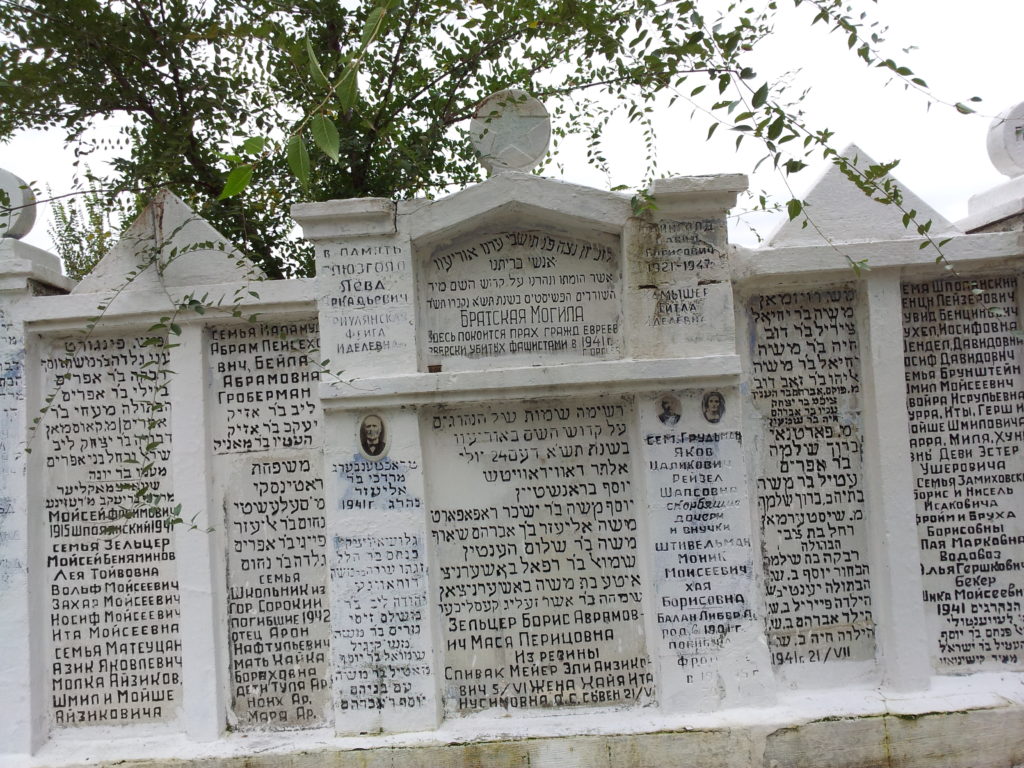 09:00 After breakfast morning drive to the town of Orhei.
09:00 After breakfast morning drive to the town of Orhei.
10:00 – 12:00 – Visiting the Jewish community in Orhei. Meet the local representative who will reveal the Jewish history of the area, visit to the Jewish cemetery (it’s considered to be the oldest Jewish cemetery in Europe-more than 400 years old with unique monuments to Jewish soldiers and victims of Holocaust, monument to the victims of Nazism), and the synagogue built in the 20th century.
13:00 – 14:00 – Lunch in traditional style in a typical Moldavian village – Butuceni, Orhei Vechi area. Enjoy Moldavian cuisine in a boarding house “Eco-Resort Butuceni”, dishes prepared from eco-products of local farmers.
14:30 – 16:00 – Sightseeing Orheiul Vechi Complex –Archeological Museum Complex (Old Orhei open-air museum) representing rich historical and cultural value situated between the villages Butuceni and Trebujeni. It’s an impressive monastery complex that presents the remains of different civilizations established between Nistru and Prut rivers. This is
a complex comprising caves, grottos, churches, Geto-Dacian fortress and hermitages. The open air museum represents a true natural fortress inhabited since the ancient times. And nowadays attracts many tourists by its incomparable landscapes, rocky surroundings, historical monuments, and grottoes, ruins of the old town and medieval fortress Shehr-al-Jedid and Turkish baths. The highlight of the locality is the unique orthodox 13th cent cave monastery with one monk that was very good isolated from the outer world.
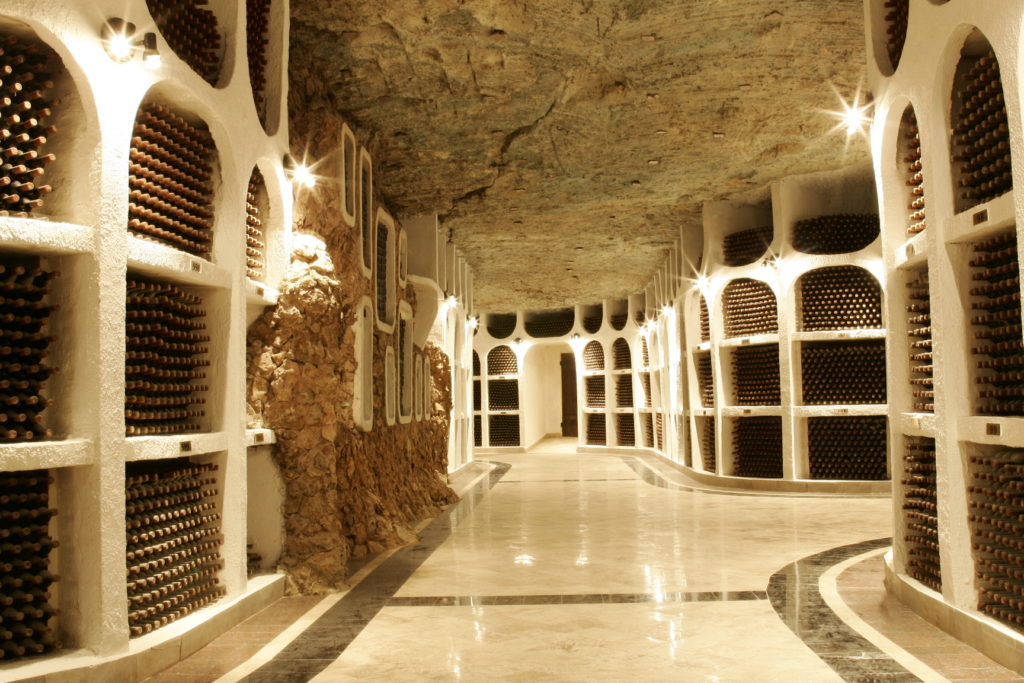 Another interesting place to be visited on the route is the Moldavian village Butuceni where the style and traditions of the Moldavian architecture of the 19th century are preserved and carefully maintained – ornamentally decorated houses,
Another interesting place to be visited on the route is the Moldavian village Butuceni where the style and traditions of the Moldavian architecture of the 19th century are preserved and carefully maintained – ornamentally decorated houses,
gates, fences, wells with potable water, old cellars and others.
17:00 – 19:00 – Drive to Cricova wine cellars for the underground tour, wine tasting and dinner.
Visit to the underground wine city and winery CRICOVA that lies under the town of Cricova and partially under the capital of Moldova, Chisinau.
The cellars represent 60 km of labyrinths and galleries having constant temperature +10 – +12 C and the relative humidity of 97-98 %. Namely these natural and favorable conditions make possible the keeping and aging of wines. Cricova winery is proud for their excellent wines and famous for its collection, underground signs, streets having the names of the precious wines “Feteasca”, “Chardonnay”, “Cabernet”…..
19:30 –20:00 – back to Chisinau, Free time.
Overnight in Chisinau.
(B, L)
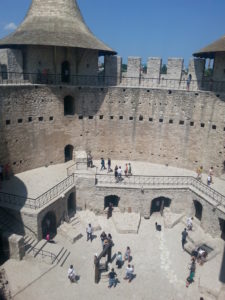 Day 4: North of Moldova: The Jews in Soroca town. Soroca Fortress.
Day 4: North of Moldova: The Jews in Soroca town. Soroca Fortress.
Today you will visit the northern locality of Moldova and learn about the Jews and their life of that region over the centuries. Soroca is a city in northern Moldova.
Jewish settlement in Soroca is first recorded in 1657 when the Jews came to this region escaping the persecution of the Polish and the Germans and searching a new life.
An organized community, however, dates back to the 18th century. During this period, Soroca had 157 Jewish families and was led by Rabbi David Solomon Eibenschutz who encouraged the study of Torah. By 1897, there were 8,763 Jews, making up over half of the population of Soroca. During the 19th century, most Jews in Soroca town, engaged in agriculture, grew primarily tobacco and grapes. The economic crisis of the 1880s caused many Jews to immigrate to other nations in search of economic prosperity. A synagogue in Soroca was established in 1775.
08:00 – 10:00 – departure to Soroca
10:30 – 13:00 – Visits to the Jewish community center in Soroca.
Stop at the monument to the victims of Fascism and Jewish cemetery
 Synagogue – one floor building built in 1804, a functional synagogue. House of the lawyer family Iosif Gendler (Jewish) – now The Museum of Natural History in Soroca.
Synagogue – one floor building built in 1804, a functional synagogue. House of the lawyer family Iosif Gendler (Jewish) – now The Museum of Natural History in Soroca.
13:00 – 14:00 – lunch at local restaurant “Cetatea Veche”/Old Fortress
15:00 – 17:00 – Tour of Soroca including Gypsy Hill with their rich mansions, the Monument “Candle of Gratitude”, and the fortress Soroca itself. Meeting with the local historian who’ll reveal all the secrets of Soroca fortress and tell about the historical events that had taken place around the fortress over the centuries and not only. The first recorded mention of Soroca fortress dates back to 1499. The fortress had captured many dramatic events including the invasions of the Tatars, Cossacks, Polish King Ian Sobesky troops, military actions of Bogdan Hmelnitskyi, anti-Ottoman campaign of the Russian Monarch Peter the Great. The fortress itself had stood numerous fires and suffered many stages of reconstruction from wood to stone.
17:00 – 19:00 – back to Chisinau for dinner and overnight
19:00 – 20:30 – dinner at restaurant “Karl Schmidt” in Chisinau.
Overnight in Chisinau.
(B, L, D)
Day 5. Northeast of Moldova, left side of the River Dniestr – Rascov village, Rybnitsa town, Dubossary town. (B, L, D)
09:00 – Morning drive to the left side of the river Dniestr/Nistru, in fact Transnistria – self-proclaimed independent Republic.
09:30 – 11:00 – first stop will be the town Dubossary established in 1792 as a Russian military settlement. The city lies 42 km from Chisinau and belongs to Transnistria. By 1847 there were living 2506 Jews in Dubossary and its surroundings, and in 1897, only in Bessarabia already 5220 (it’s 43% of population). During the World War II there took place a mass destruction of the Jews living in Dubossary and nearby villages. In 1960 only 150 Jews were living in this town. With the help of them at the place of the Jews execution in Dubossary was set up a memorial in 1956. In 1995 a Jewish community was founded in Dubossary, its priority activities are provision of social and financial assistance to the disabled, the sick and the elderly, veterans and prisoners of the Ghetto; preserve and revive the distinctive Jewish culture; care of Jewish cemetery and monuments.
The largest mass burial of the victims of Holocaust took place at the outskirts of Dubossary. More than 3000 names of the victims are engraved on the granite slabs. The Memorial has 11 beds of honor with thousands of victims each.
11:00 – further drive to the town of Rybnitsa – another important city in Transnistria that witnessed many horrible events referred to the Jews. The first mention of Rybnitsa dates back to 1628 and the first Jews had appeared in Rybnitsa toghether wth the rest of population. Nowadays there are living only 1% of the Jews from the total population. Before the World war II the Jewish population in Rybnitsa was around 30%.
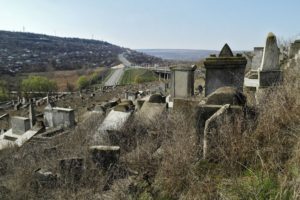 During the Holacaust period on the territory of Rybnitsa and the surrounding area perished more than 6000 of the Jews, both locals and immigrants from Bessarabia and Bukovina.
During the Holacaust period on the territory of Rybnitsa and the surrounding area perished more than 6000 of the Jews, both locals and immigrants from Bessarabia and Bukovina.
12:00 – 13:00 – Learn the story of the Jewry in Rybnitsa and visit the Memorial and a Bed of Honor for 48 Jews prisoners of the Ghetto in Rybnitsa; Jewish cemetery with a Bed of Honor for more than 500 Jews – Ghetto Prisoners; Monument
to the Martyrs and Victims of Holocaust in Rybnitsa. The Ghetto in Rybnitsa lasted 936 days – from September 7, 1941 till March 29, 1944. There were around 3000 people subjected to the Ghetto. More than 2700 were killed, their bed of Honor lies on the cemetry. The Monument in their honor was set up in 2006 in the shape of a sarcophagus.
13:00 – 14:00 – lunch in a local restaurant “Hortitsa”(Fortress) in Rybnitsa.
15:00 – 17:00 – We continue to explore the region along the river Dniestr and drive to the village of Rashcov lying on the left bank of the River Nistru and holding rich facts and history of that region. It’s the oldest and the biggest rural village in Transnistria but the population of this locality is extremely decreasing due to natural decline and emigration. The locality is called “small Switzerland” due to its landscapes and natural attractions. Over the centuries there were living people of different nationalities, it was a rich region of Armenian merchants, later there was also living the daughter of Moldavian ruler Vasilie Lupu named Roxana with her husband Timofei Hmelnitskii, the next owners of the village Rashcov were the generation of Polish-Lithuanian Commonwealth (17th c) – it was the period when the village became a Jewish locality and the Hesed center. In 19 c. there lived 2 thousands Jews in Rashcovo. Today, most of the population are the Ukrainians and speak the Ukrainian, the Jews and Armenians are not found there anymore.
While in Rashcov you’ll see The ruins of Hasidic Synagogue of the 18th century (1749) – built on the means of box takings (a kind of tax). Initially there were 3 synagogues in Rashcov. Today, one of them is used as Mayor’s Office, the second one once used to be a storehouse – now empty, and the third one is presented in ruins only. Some wooden fragments of the interior of the synagogue had survived till 1990 and were taken to Chisinau.
The founder of the Hasidic Movement in Rashcovo village was Zioma Rasckever whose descendants stayed there up to the Revolution. Later, when the Synagogue was destroyed and the Jews were persecuted, they moved to the village Vadul-Rashcov across the river Dnister on the Moldavian part, lying on the other bank of the river, not Transnistria. In the village Vadul-Rashcov one can see the ruins of the old Jewish cemetery in Moldova situated very close to the river.
The ruins of Greek-Catholic Church and the ruins of Church “Pokrovskaia” (1740). ·
Catholic Church of the St.Katen (1789-91) (now belongs to Polish community) – the oldest catholic temple that’s preserved till nowadays (first it was Armenian Catholic church). The church represents the example of architecture of the Polish
Catholic churches of the 18th c. with Baroque elements. “Red Rock” over the village that’s a prominent representative of Karst deposits. The mountain got the name RED due to the changes in color on the sunset: from pale pink to crimson.
17:00 – 19:00 – back to Chisinau and arrival
19:30 – dinner at restaurant “Acasa La Mama” (At Mother’s Home)
Overnight at Hotel in Chisinau.
(B, L, D)
Day 6. Transnistria and its Jewish Heritage. Tighina Fortress. (B, L, D)
09:00 – After breakfast morning drive to Transnistria – unrecognized and self-proclaimed independent Pridnestrovian Moldavian Republic – Transnistria that has its own currency, border guards and policy. Cities to be visited on the route: Bendery and Tiraspol. The city Bendery was founded in 1408 as the Tighina Fortress of the Ottoman Empire. Starting from 1990 Bendery is a part of Transnistria. The first documents proving the Jews presence there date back to the beginning of XVI c. when a synagogue was built on the territory of the fort. By 1930 the city counted 8000 Jews and by the end of 1980 the Jewish population was 6000. Today, in Bendery and its suburbs live around 1000 Jews. In 2001 a Jewish community was founded in Bendery as well as the Jewish Agency “Sohnut” and the Synagogue.
10:30 – 11:30 – After crossing the border you will explore the 16th century Tighina fortress-Turkish fortress and visit the on-site museum and the War Memorial in the city of Bender. The first documentary mention of “Tighina Fortress” was in 1408. Its walls have survived to the present and offer an example of classic Moldavian defensive construction.
In 1941, when the Red Army had left Bendery, it caused the occupation of the city and creation of Ghetto, thus 58 Jews were murdered in a ditch close to the Tighina fortress.
 11:30 – 13:00 – Jewish tour of Bendery
11:30 – 13:00 – Jewish tour of Bendery
Bendery had very many synagogues, even more than Orthodox churches. The synagogues were divided according the opulence of the people. Some of them were for the rich, for the poor, and in the others prayed the handicraftsmen – every professional group had its synagogue, and in each district of the city the Jews had their house of worship.
Jewish Sites and Jewish Heritage in Bendery:
Old Jewish Synagogue (1812) and Jewish community “Habad Liubavich” on 30 Suvorov Street – the only functional synagogue in Bendery at present. Initially and till 1939 it was Clerk’s Synagogue, since 1989 after reconstruction there has
been activating the synagogue of the Jewish religious movement “Habad Liubavici”. Today the building is in disrepair.
Monument to the victims of Holocaust set up on the front of the river Dnistr in Bendery in 2002 and the building of former
central synagogue.
Coopers Synagogue (1914), now the building is used for the sport school, (left) and Former Hasidic Synagogue of 1814 “Sadigurer Klois” (28 Suvorov Street)– during the World War II used by the fascists as a stable, after War it was restored as a synagogue, now it’s the boxing school.
Choral Synagogue and MANUS Bank (today the center for the youth development) and Another Choral Synagogue
on Pushkin Street (today District Court). Old Jewish Cemetery in Bendery.
Continue to Tiraspol. 13:30 – 15:00 – lunch at restaurant of Ukrainian cuisine “Kumanek” in Tiraspol
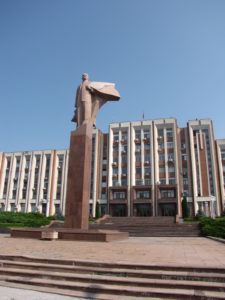 15:00 – 17:00 – guided general city tour of Tiraspol – the capital of Transnistria and is the second largest city in Moldova. The city is located on the Eastern bank of the Dniester River. It was founded by the Russian general Alexandr Suvorov in 1792 whose statue is rising on the central square in Tiraspol. Since the 19th century, this city has always had a thriving Jewish presence. The Jews came here from different Russian localities as well as from Bessarabia. By 1897, the Jewish community equaled 27 percent of the total population of Tiraspol. At beginning of the XX century, town occupied only the central part of modern Tiraspol. Pokrovskaya Street (now October 25th) was the main street, it housed the administrative and commercial offices and houses of wealthy citizens. Tiraspol had a significant grain trade, concentrated almost exclusively in the hands of the Jews.
15:00 – 17:00 – guided general city tour of Tiraspol – the capital of Transnistria and is the second largest city in Moldova. The city is located on the Eastern bank of the Dniester River. It was founded by the Russian general Alexandr Suvorov in 1792 whose statue is rising on the central square in Tiraspol. Since the 19th century, this city has always had a thriving Jewish presence. The Jews came here from different Russian localities as well as from Bessarabia. By 1897, the Jewish community equaled 27 percent of the total population of Tiraspol. At beginning of the XX century, town occupied only the central part of modern Tiraspol. Pokrovskaya Street (now October 25th) was the main street, it housed the administrative and commercial offices and houses of wealthy citizens. Tiraspol had a significant grain trade, concentrated almost exclusively in the hands of the Jews.
Before the war, in 1926 Jews accounted for 29% of Tiraspol’s population or 6398 people. The city had several synagogues and two Jewish schools.
During the Holocaust, nearly the entire Jewish community perished in Nazi concentration camps. After World War II, the Jewish community began to grow once again and, by the 1960s, there were nearly 1,500 Jews. After the war (1959) the only remaining synagogue was closed. Today, Tiraspol has its Jewish community that counts 1700 people and “The Charity Cultural Center”. In 1997 there was built and put into operation the synagogue in Tiraspol by sponsorship that’s been activating till present. To be visited:
- Central Area “Suvorov” with the Monument to Alexander Suvorov
- House of Soviets
- Square with monument to Ekaterina II
- Glory Memorial (1972)
- Jewish Synagogue and community
- Monument of the Victims of Fascism and the Bed of Honor
17:00 – back to Chisinau.
18:30 – 20:00 – dinner at restaurant “Forshmak” in Chisinau
Overnight at hotel in Chisinau
(B, L, D)
Day 7 : Farewell to Moldova.
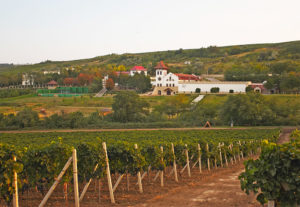 Further discoveries: Odessa Region, Ukraine.
Further discoveries: Odessa Region, Ukraine.
After breakfast you’ll have some free time for the last purchases.
10:00 – check-out from hotel and drive southward of Moldova for visiting the old winery situated close to the Ukrainian border in the village of Purcari.
12:00 – 14:30 – visit to the touristic complex and winery Purcari. Purcari is the oldest wine-estate in Moldova that is a French-style castle with wine cellars established in 1827. This winery is famous all over the world for its legendary wines “Rosu de Purcari” and “Negru de Purcari” that is true masterpiece which Queen Elizabeth II preferred to savor.
Whilst there you’ll visit the production, grape processing and the wine storage areas, including bottle line. Walk into the cellars where the wine is matured in oak barrels and bottles, including the Purcari wine collection. Enjoy tasting Purcari wines and lunch in the estate.
15:00 – farewell to Moldova and drive to Odessa to learn the present and past Jewish heritage of that region
17:00 – arrival in Odessa. Check-in hotel. Meet the guide and follow to a restaurant for a dinner.
18:30 – 20:00 – Dinner in a kosher restaurant “Rozmarin” in Odessa
Overnight at hotel in Odessa.
(B, L, D)
Day 8: Jewish Heritage Tour of Odessa
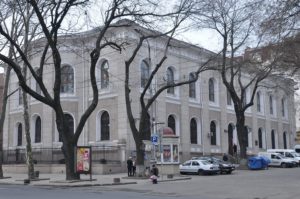 09:00 – 13:00 – After breakfast at hotel you’ll get acquainted with the cozy city Odessa and find out interesting facts about the past and present Jewish heritage. Jewish Odessa is a phenomenon that attracts many historians, researchers, as well as ordinary travelers. And rightfully so, as the story of the Jewish Odessa is full of interesting facts and contradictions: local governors of the first half of the 19th century encouraged Jews to come and settle in the thriving city, yet the first in Russian Empire pogrom happened in Odessa. Among Odessa’s rich were the Ephrussi (ever read de Waal’s “Hare with Amber Eyes”?), the Brodsky and Ashkenazi families. On the other hand, 100% of the city tailors were Jewish. Jews made up a majority of small brokers, traders and porters. Odessa enthusiastically embraced Haskalah movement (Maskilim), and yet later became home to Sionism and Hasidism.
09:00 – 13:00 – After breakfast at hotel you’ll get acquainted with the cozy city Odessa and find out interesting facts about the past and present Jewish heritage. Jewish Odessa is a phenomenon that attracts many historians, researchers, as well as ordinary travelers. And rightfully so, as the story of the Jewish Odessa is full of interesting facts and contradictions: local governors of the first half of the 19th century encouraged Jews to come and settle in the thriving city, yet the first in Russian Empire pogrom happened in Odessa. Among Odessa’s rich were the Ephrussi (ever read de Waal’s “Hare with Amber Eyes”?), the Brodsky and Ashkenazi families. On the other hand, 100% of the city tailors were Jewish. Jews made up a majority of small brokers, traders and porters. Odessa enthusiastically embraced Haskalah movement (Maskilim), and yet later became home to Sionism and Hasidism.
During the tour you will see the sights that have a particular meaning to the local Jewish community and the places, which are connected with such remarkable names as Isaac Babel, Meir Diezengoff, Shalom Aleihem, Vladimir (Ze’ev) Zhabotinsky, Hayim Nahman Bialik, Peter Stolyarsky, Emil Gilels, David Oistrakh to name a few.
Sites to be visited:
- Jewish museum of Odessa at Migdal society
- Main synagogue in Odessa
- “Brodsky” synagogue
- Hasidic Synagogue
- Jewish cemetery
- Prohorovsky Square with the memorial to the victims of Fascism
13:00 – 14:30
– Lunch at restaurant “Ukrainska Lasunka”
14:30 – 18:30 – Tour around Odessa to be continued
Memorial to the Victims of Holocaust
Jewish Memorial to the Victims of Pogrom in 1905
18:30 – 20:30 – dinner at restaurant “Klarabara”
Return to hotel for overnight.
(B, L, D)
Day 9: Flight back home. (B)
Buffet breakfast at hotel. Free time for personal discoveries. Check-out at hotel before 12:00. Transfer to the airport with guide for flight back home. Farewell Ukraine and Odessa.
This is a sample itinerary please inquire for prices. We customize for each client.